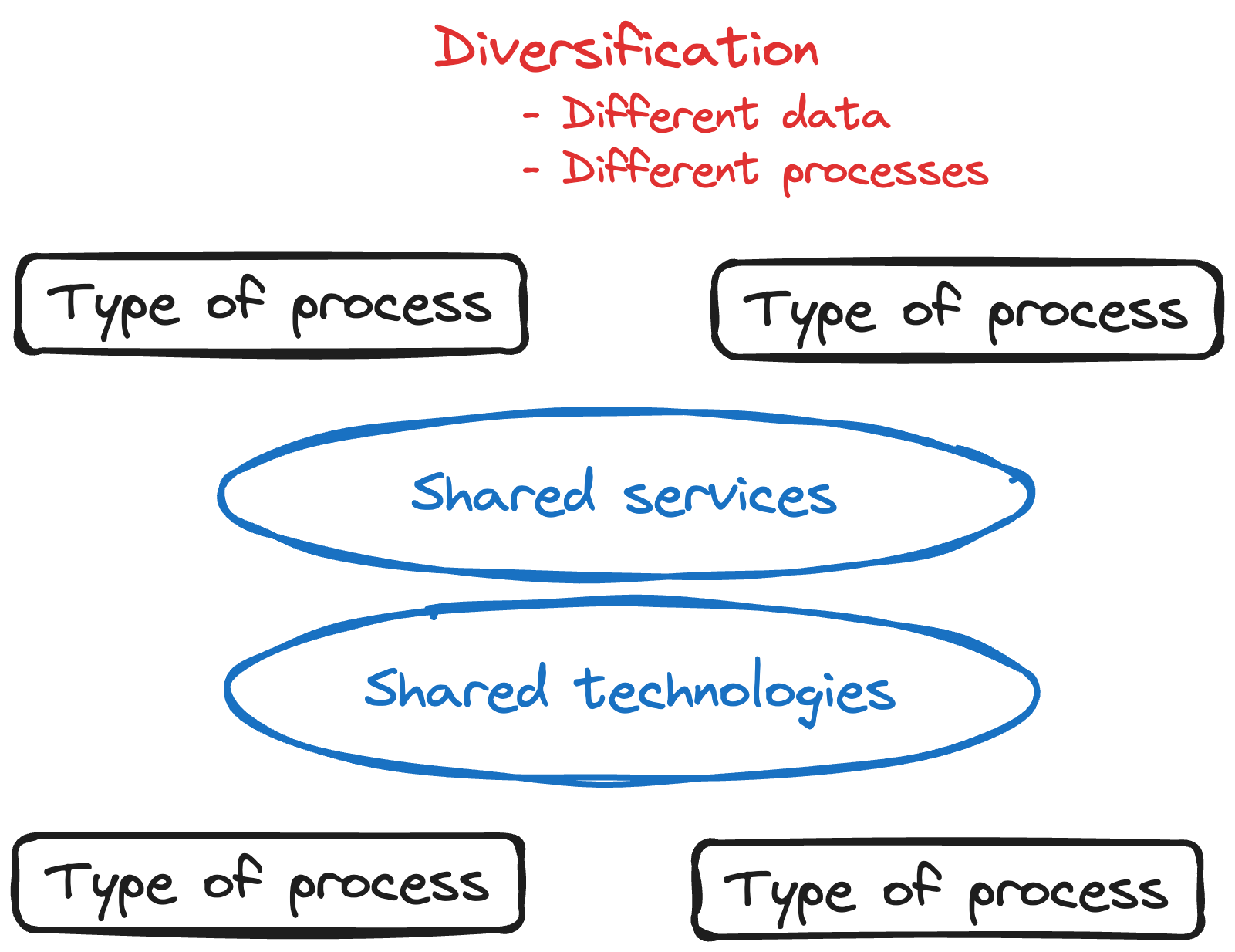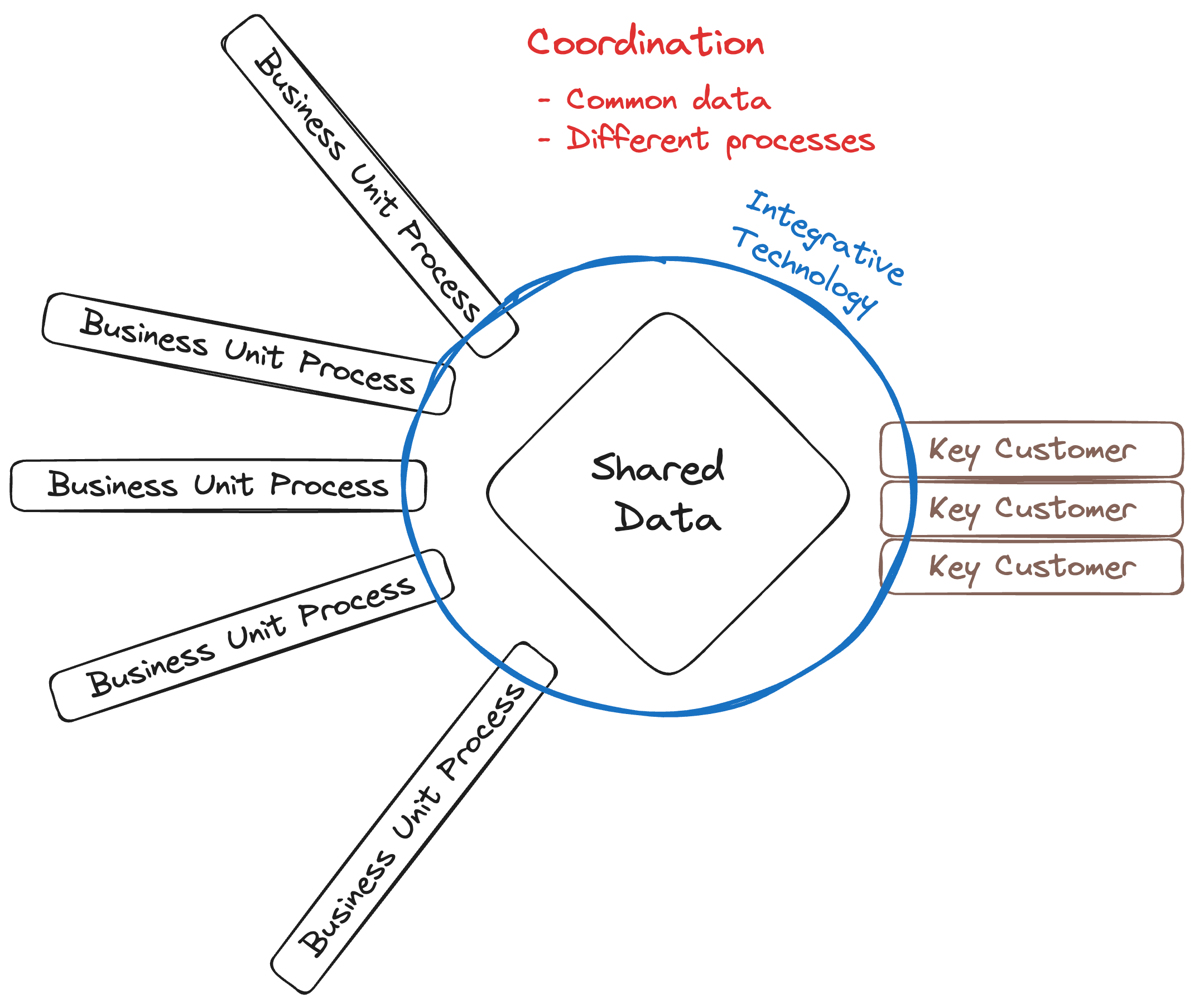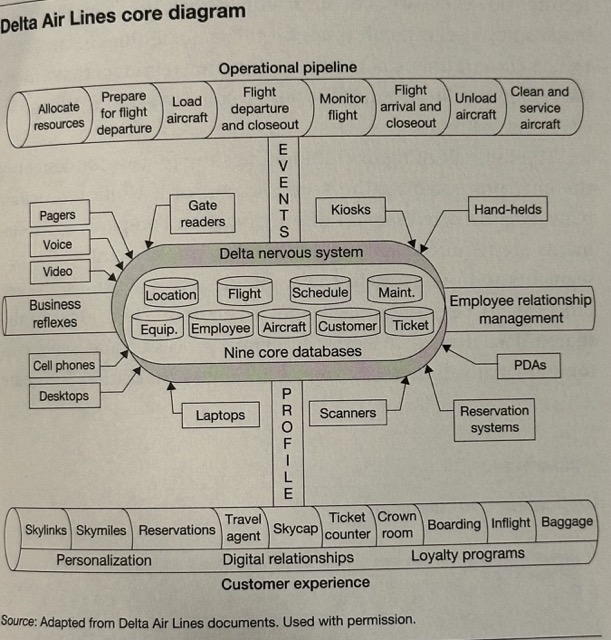The book Enterprise Architecture as a Strategy suggests a Simple diagram is Enough to articulate the key aspects of a company’s Enterprise Architecture. The book also states that EAs are better represented in principles, policies, and technology choices that are made. There are some common elements and considerations you should have, but there is no “one” Core EA Diagram to adhere to; instead it’s better to use what makes sense to you. There are archetypical diagrams for each of the Four Types of Company Operating Models.
4 Elements of EA Diagrams & 4 Operating Models
| Diversification | Coordination (shared data) | Replication (same process) | Unification | |
|---|---|---|---|---|
| Shared Processes | ❌ | ❌ | ✅ | ✅ |
| Shared Data | ❌ | ✅ | ❌ | ✅ |
| Key linking/automation tech | ✅ | ❌ | ✅ | Optional |
| Key customers | ❌ | ✅ | ❌ | ✅ |
| Not all of the four elements are important across all the 4 operating models. The EA Diagram for each can be kickstarted using a template like the ones below I made in Excalidraw: |
Diversification

Coordination

Replication

Unification

Example
Delta Airline’s Core Business Processes are:
- Operational Pipeline
- Business Reflexes
- Customer Experience
- Employee Relationship Management

Pros & Cons of the Method
Pros
- By keeping the graphic small, it’s easily consumed
- By keeping the graphic simple, it’s easy to yield net positive ROI
Cons
- The graphic is vague
- The graphic doesn’t spur action, context is still needed